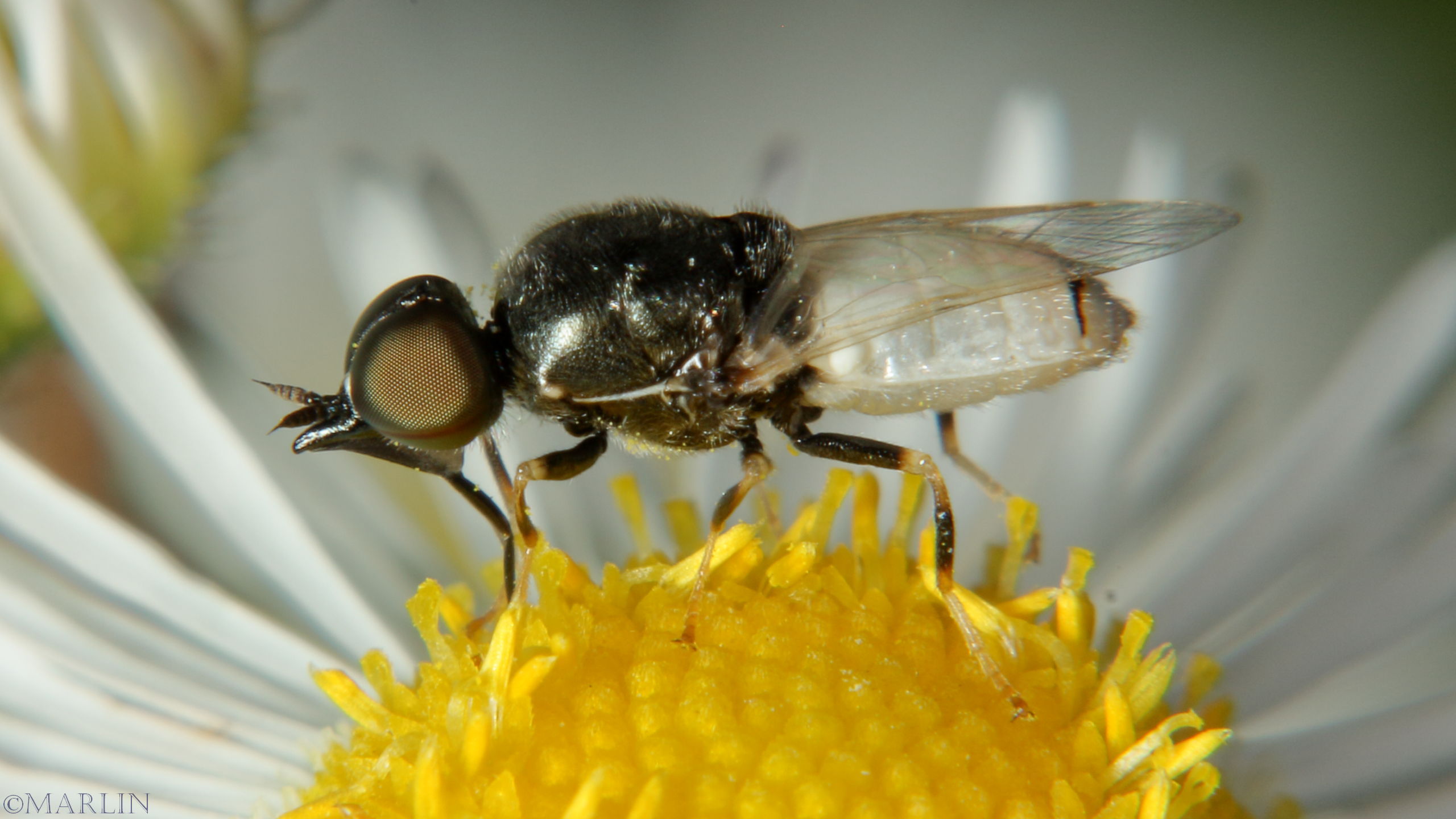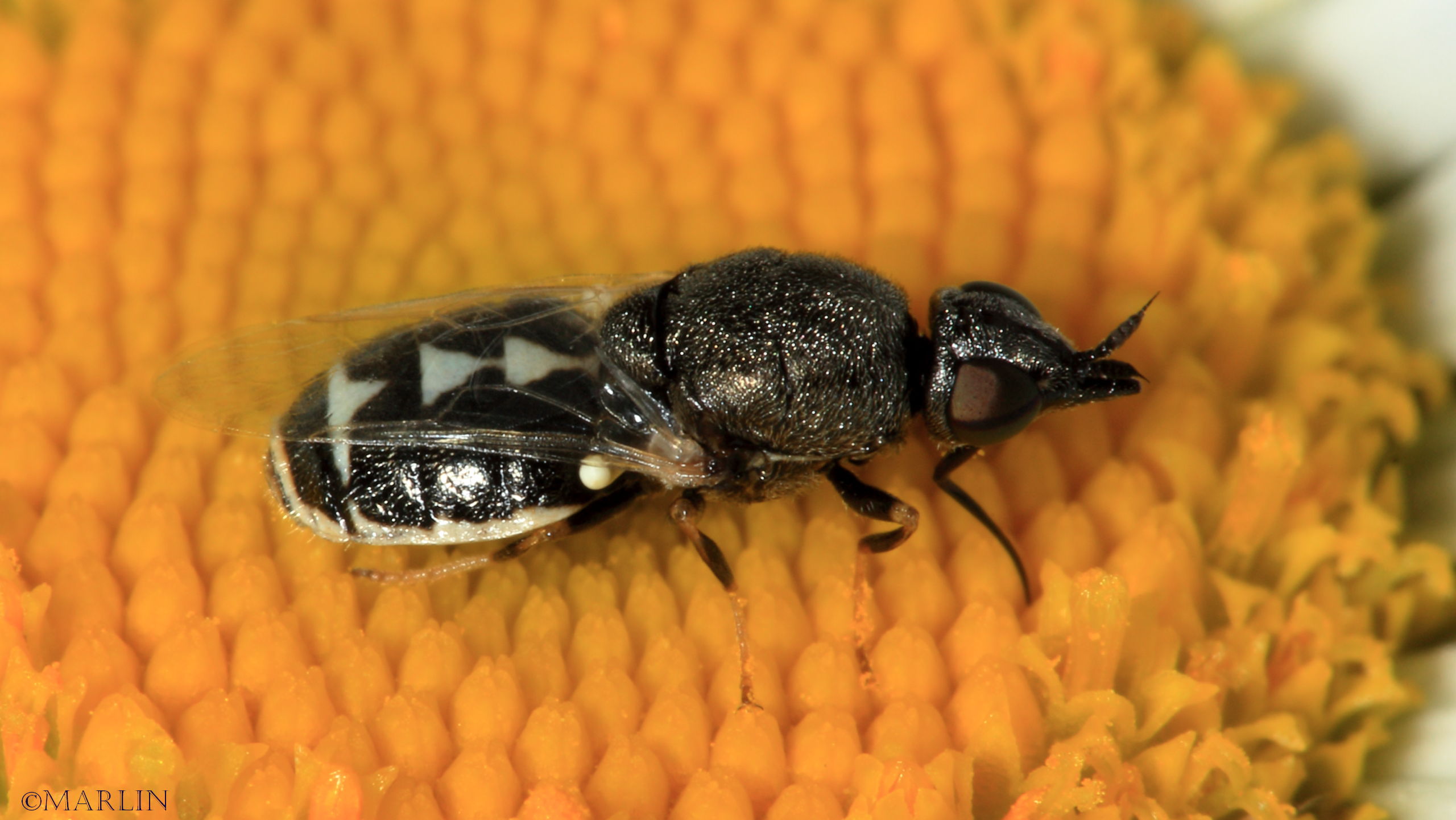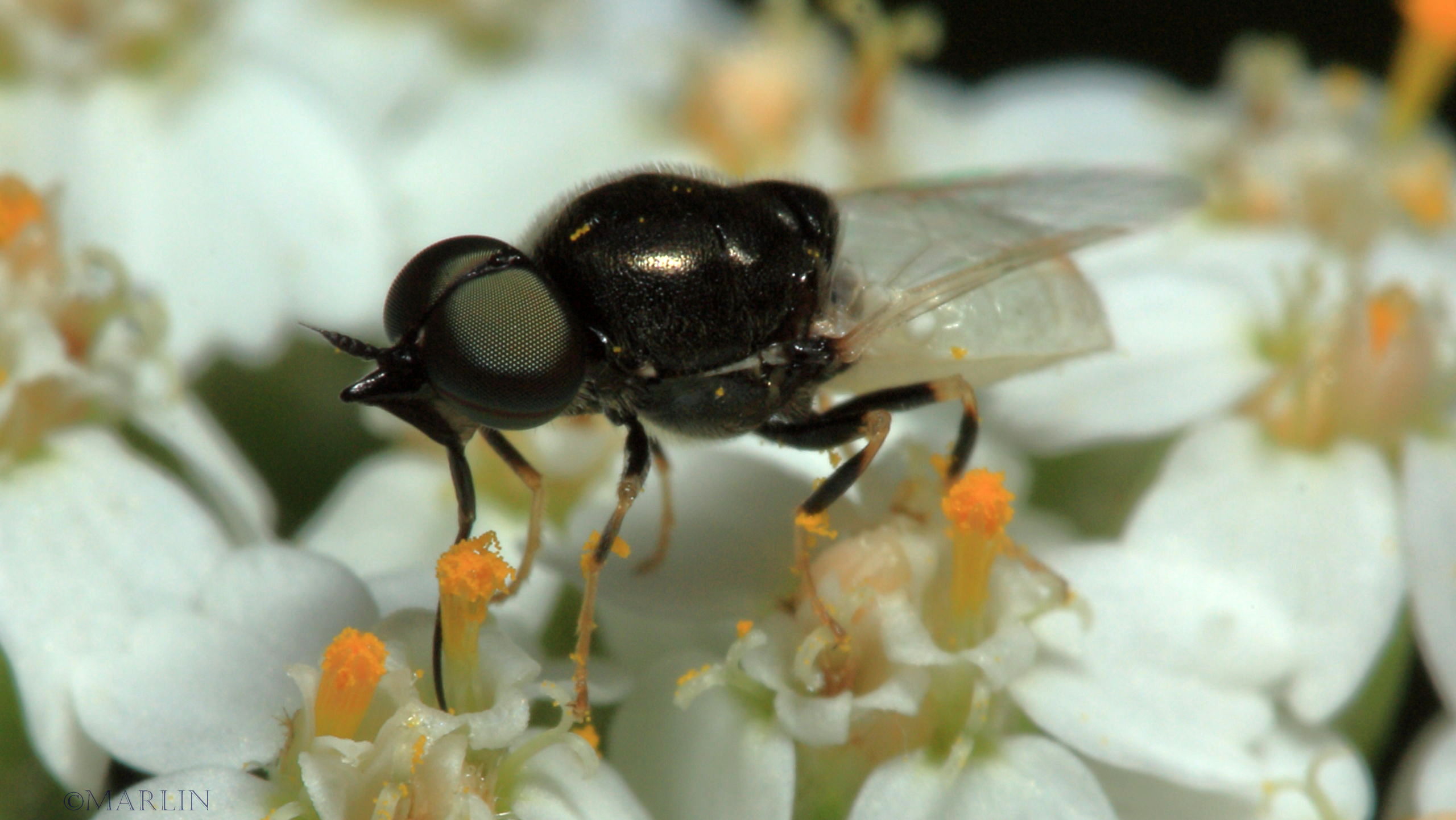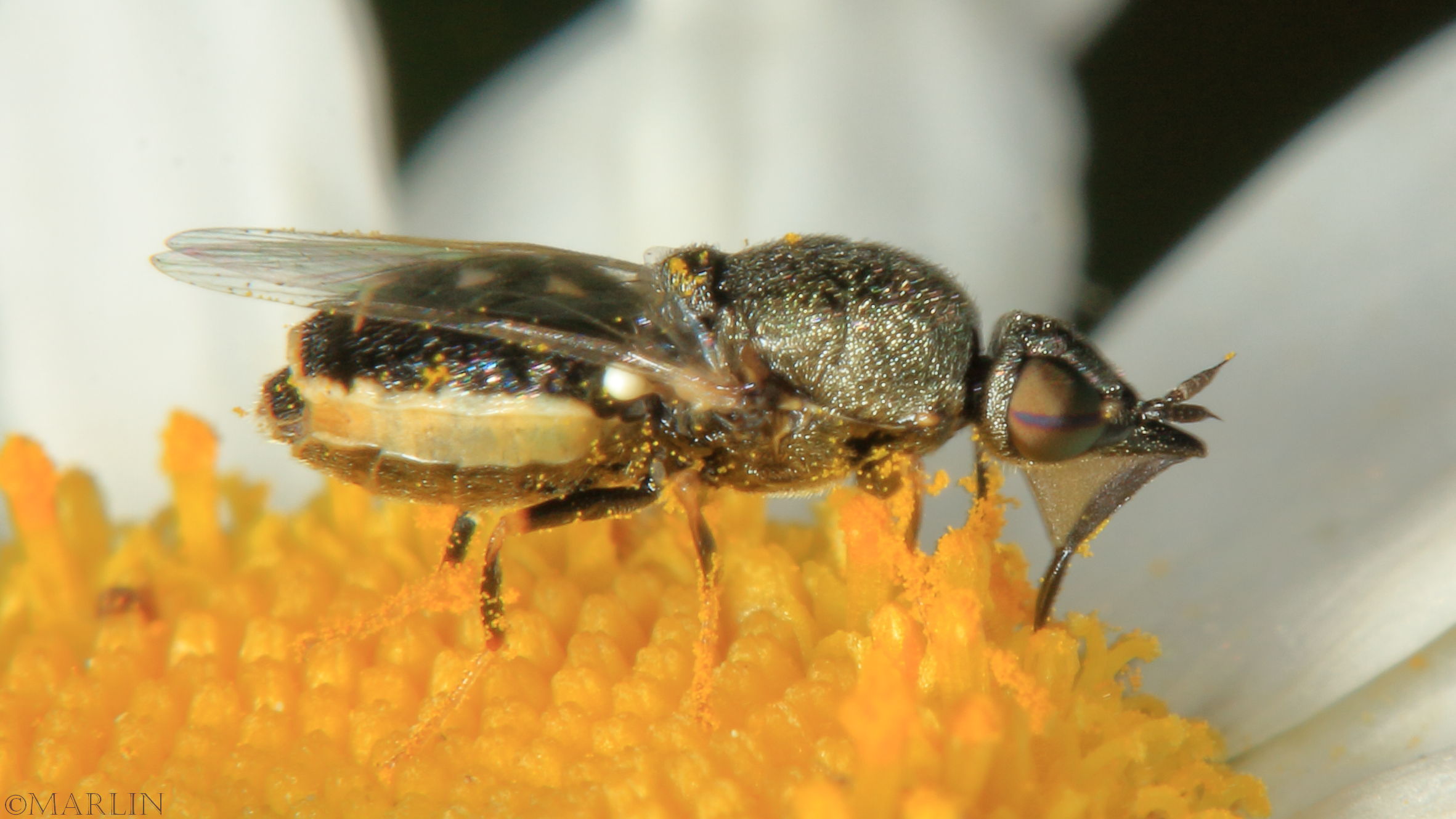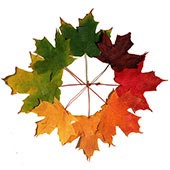Soldier Fly – Nemotelus kansensis
Family Stratiomyidae – soldier flies, stratiome
Live adult female and male flies photographed in the wild at DuPage County, Illinois, USA.
Flies in the family Stratiomyidae are commonly called soldier flies (after Greek stratiotes, soldier, referring to the abdominal markings resembling military uniform hash marks). Stratiomyids range worldwide on every continent, save Antarctica, in 400 genera containing ~1500 species [1].
Ranging from 3 to 28mm long, [2] adults are almost always found on flowers, where they use their jointed proboscis to suck nectar to fuel their amorous activities. Wings are held scissors-like over the back while at rest, and are transparent (hyaline), darkened, with a blackish tinge (infuscate), or with a distinct pattern [2].
Antennae are highly variable in shape, with scape and pedicel short, flagellum with 5-6 flagellomeres (this species has 5), sometimes with an apical or arista-like stylus [1][2].
Soldier fly larvae are almost all aquatic, feeding on decaying organic matter. Some larvae of terrestrial species feed on dung, rotten fruit, and decomposing plant material. Other stratiomyid species have carnivorous larvae [1].
Nemotelus kansensis exhibits sexual dimorphism in color and markings. Female’s compound eyes often holoptic, as here.
References
- Bugguide.net, Nemotelus kansensis Male
- Norman E. Woodley, “STRATIOMYIDAE (soldier flies) .pdf
Flies Main | Flies Index | Bee Flies | Robber Flies
